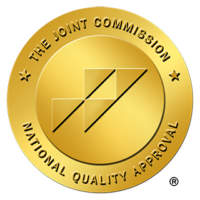Oxycodone Detox
Oxycodone is a commonly abused opiate. This potent semi-synthetic opioid can be beneficial for pain management when taken as suggested. However, it carries a high risk of physical dependence and addiction.
On the streets, it is often called OC, Ox, Perc, Oxy, or Kicker. Yet, in the medical field, it is prescribed under the name OxyContin®. Patients are given extended-release tablets in 10, 20, 40, and 80 mg doses or an immediate-release tablet (such as 5 mg OxyIR®).
When abused, users typically take this drug orally or intravenously. Users may also crush and sniff tablets. The effects are similar to fentanyl, heroin, morphine, and other opioids. All of these carry a high risk of overdose, which is why getting the treatment you need is so crucial.
In 2022, the majority of preventable overdose deaths in the United States involved opioids (78%), totaling 77,603 fatalities. Synthetic opioids, which include fentanyl and tramadol, are the most concerning. However, the natural and semi-synthetic opioid category, including oxycodone, was still involved in 10,516 preventable deaths.
If you or a loved one are abusing oxycodone, it is important to consider detoxification. This process is the first step in the treatment process. Once your body has fully eliminated the substance, you can then focus on an individualized oxycodone addiction treatment plan within a professional facility.
Here is what you can expect from the initial oxycodone detox process.
What Is Oxycodone Detox?
When someone abuses oxycodone for an extended period or is taking large doses, they will develop a physical dependence. For many, a significant psychological dependence also develops, which is something that is often addressed in addiction treatment following the detoxification process.
Physical dependence is what leads to most of the withdrawal symptoms associated with oxycodone and, although rare, can be fatal. This withdrawal syndrome occurs when a user who is dependent on oxycodone suddenly reduces or stops taking the substance.
What Happens During Detox?
If you or a loved one are ready to live a life of sobriety, the detox process is the first critical step.
Oxycodone users can detox at home. However, the experience is safer and more comfortable in a professional, clinical environment. Access to a professional healthcare team gives you 24-hour support for psychological care, medication management, and emergency assistance if needed.
While the detox process is unique to each individual, here is what you can expect when attending a detoxification facility.
- Abstinence: For the detox process to begin, you will need to abstain from taking oxycodone. If you were originally prescribed oxycodone in response to medical needs, it is best to speak with your healthcare team about your anticipated next steps. You may be given the option to begin tapering your dose. However, if there is an underlying mental health concern or if you have tried quitting before and were unsuccessful, it may be time to consider a professional detox facility.
- Assessment: When you decide to enter a detox facility, an assessment may be required to better understand the severity of your addiction and whether further action is required concerning a dual diagnosis. This step ensures a more personalized approach to detox and helps you prepare for the next steps, especially if you plan on entering an outpatient or inpatient treatment program.
- Detoxification: Once you discontinue your oxycodone use, the initial detox period will begin. The severity of your withdrawal symptoms will depend on several factors, including your regular average dosage, the length of time you were using, and whether you were using numerous substances—known as polysubstance abuse. For oxycodone, most users experience peak symptoms within 72 hours. Following this period, symptoms will begin to subside in severity, especially if you are in a medically assisted detox program.
- Aftercare: For some, withdrawal symptoms last between 10-20 days. Following this period, users often attend treatment programs where they can access evidence-based therapy options. Many individuals suffering from opioid use disorder also live with a mental health disorder. Data shows that over 60% of those abusing opioids have a mental illness, and 24% have a serious mental illness. If this is your concern, a dual-diagnosis treatment program can set you up for long-term success.
The Oxycodone Detox Process
The oxycodone detox process isn’t identical for any two users. There are many considerations, and the process itself can be complex—especially when accounting for co-occurring mental health concerns. In these cases, mental health considerations need to be taken into account. In other cases, pain management may be a challenge, especially when the user was initially prescribed the drug for chronic pain. Each individual is assessed and treated accordingly.
Once the oxycodone detox process begins, how quickly you experience withdrawal symptoms will depend on several factors, including whether you take immediate-acting or long-acting oxycodone. On average, the onset of withdrawal symptoms for immediate-acting occurs 8-24 hours after the last use (duration of 4-10 days). For long-acting, symptoms tend to begin 12-48 hours after the last use (duration of 10-20 days).
What Are Oxycodone Withdrawal Symptoms?
While the detox process is complex and will vary from person to person, it begins with withdrawal symptoms, including insomnia, vomiting, sweating, stomach cramping, muscle aches, and diarrhea, among others.
These symptoms can last for weeks, depending on your history of abuse. During this process, the symptoms are very unpleasant, and while not typically life-threatening, they can be. More specifically, vomiting and diarrhea can have concerning impacts on high-risk individuals.
When left untreated, those going through severe withdrawal can become extremely dehydrated and experience heightened blood sodium levels. These effects can end in heart failure. However, with appropriate medical management, this consequence is preventable.


Types of Oxycodone Detox Treatment Options
There are two primary options when seeking oxycodone addiction treatment: inpatient or outpatient. When beginning the detox period, both options have unique advantages. The best option for you will depend on whether you are able and willing to stay on-site at a detox facility.
Finding the Right Oxycodone Detox Facility for You
The oxycodone detox treatment process can seem daunting. If you have tried to detox before, you know that this process is challenging. However, you can overcome this initial phase with the right support, allowing you to move into a treatment plan with greater focus and confidence.If you are willing to begin an oxycodone addiction treatment plan, recognizing that there’s an issue, you have already made significant progress.
At Engage Wellness Acton, we specialize in dual-diagnosis treatment. Our clients complete an inpatient or outpatient detox program before visiting us, which helps set them up for ongoing success. We then provide the necessary support and evidence-based treatment to encourage long-term sobriety while addressing mental health symptoms.
Engage Wellness Acton helps clients like you regain control and build a healthy, fulfilling future by taking a holistic approach.Ready to take the next step? Contact Engage Wellness Acton to discuss your options today!










